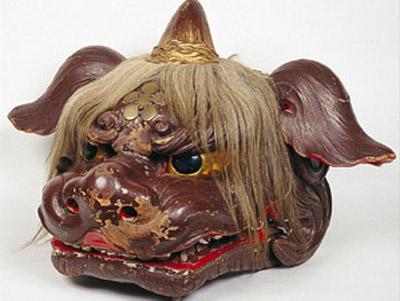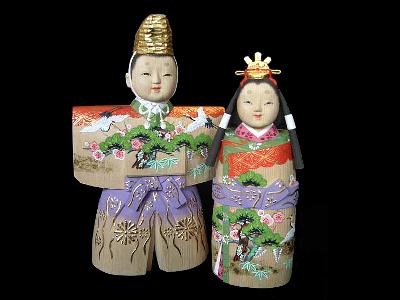Nara Ittobori Dolls, otherwise known as Nara Dolls, are traditional handicraft products in Nara Pref. A block of Japanese cypress, Japanese Judas tree, or camphor tree is dynamically carved into a shape of a doll with a chisel, onto which colorful painting is applied with leaf gold and iwa-enogu (stone pigment). These elegant dolls are made in the motif of Noh play, Maigaku (Japanese traditional dancing), deer, Oriental zodiac, or Hina Dolls. The origin of Nara Ittobori Dolls is said to have been the Noh-gaku dolls that were dedicated to the ceremonies held at Kasuga Taisha Shrine in the late Heian period (around the 12th Century). The original dolls were very simple in shape because they were used for sacred ceremonies and the least human manipulation was required. However, their gorgeous coloration, which is the most distinctive characteristic of Nara dolls, was already seen in the original forms. Later in the late Edo period, Nara dolls were enhanced to the level of art by Toen Morikawa. In 1893, the dolls were exhibited at Chicago World Exposition and gained high plaudit. The dynamic and powerful shapes and the delicate and elaborate colors are well harmonized in Nara Dolls. These elegant court dolls are still loved by a lot of people.
















